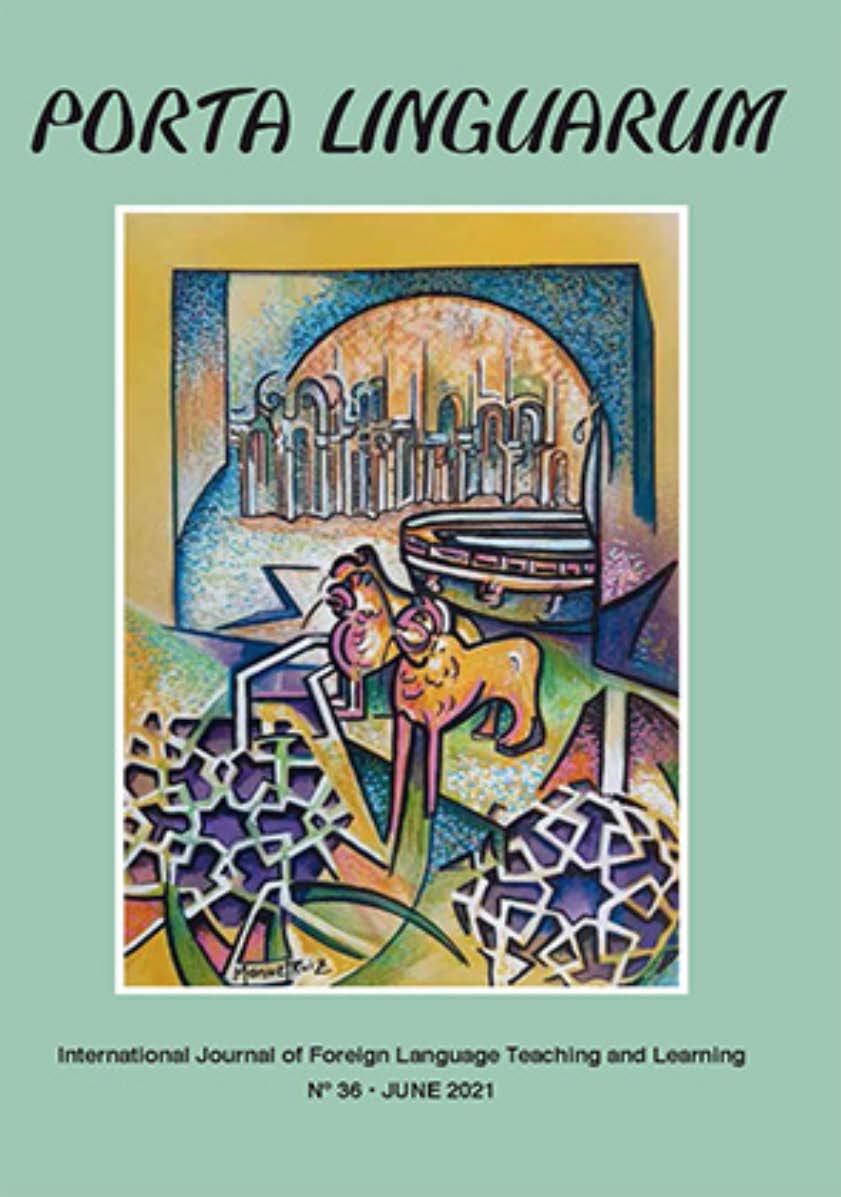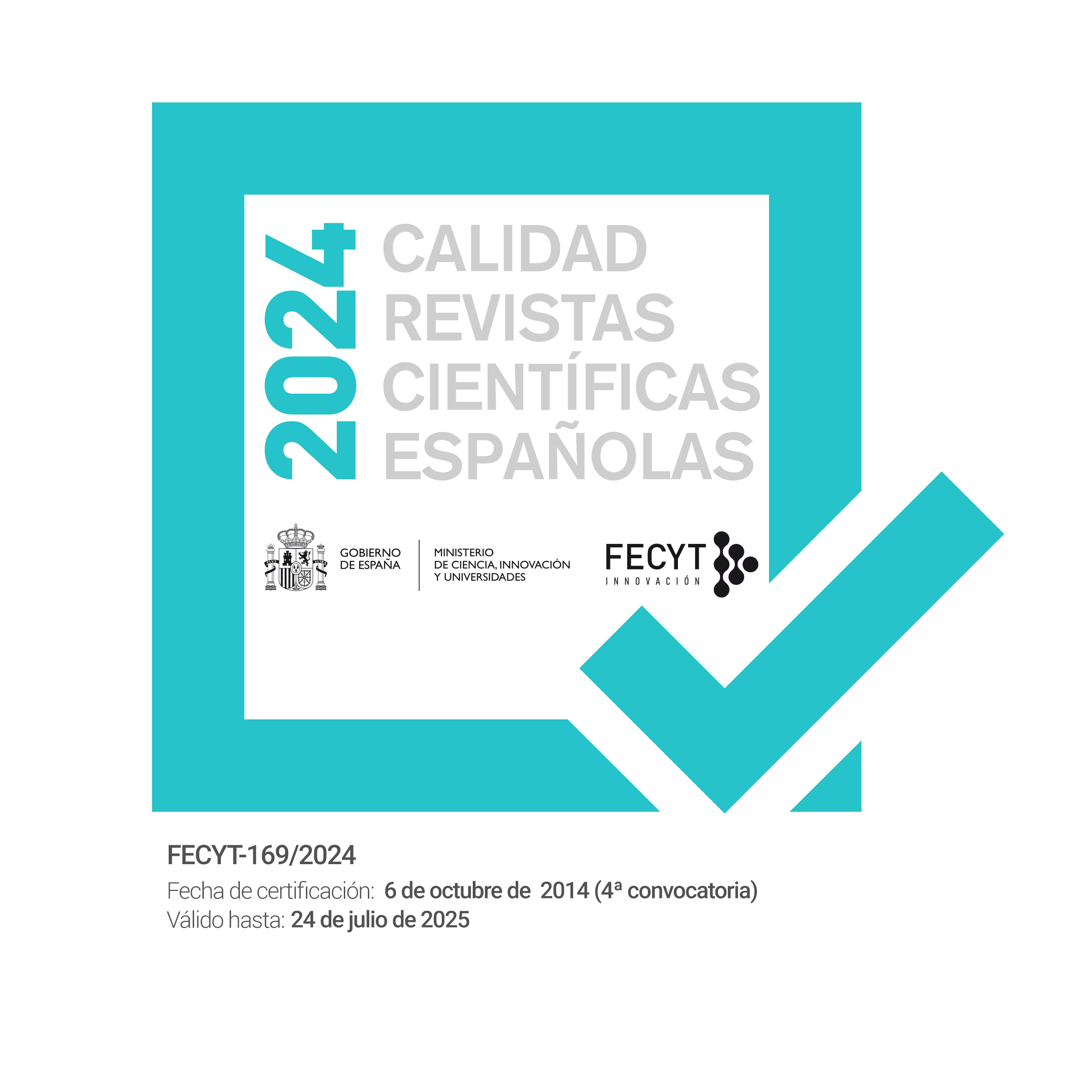Concurrent Group-dynamic Assessment of Intermediate EFL Learners’ Receptive and Productive Vocabulary Size
DOI:
https://doi.org/10.30827/portalin.vi36.15864Keywords:
dynamic assessment, group-dynamic assessment, vocabulary knowledge, receptive vocabulary size, productive vocabulary sizeAbstract
Although research studies on dynamic assessment (DA) yielded promising results to the field of language teaching, scant research attention has been paid to examining the effectiveness of group dynamic assessment (G-DA) in relation to vocabulary development. To this effect, the present mixed-methods study was designed to inspect the potential of concurrent G-DA in enlarging receptive and productive vocabulary size of 56 Iranian intermediate EFL learners. The study used two modalities: the control group, which was taught the selected lexical items through traditional procedures such as using word lists; and the experimental group, which was offered group-based supportive prompts for doing vocabulary exercises within the G-DA framework. The results of a series of independent-samples t-tests indicated the significant effect of G-DA in enhancing receptive and productive vocabulary size of EFL learners. The qualitative data underscored the role of group mediation in increasing learners’ motivation to increase vocabulary uptake within the G-DA framework and maintaining their positive attitude toward G-DA.
Downloads
References
Ableeva, R. (2010). Dynamic assessment of listening comprehension in L2 French. [Unpublished doctoral dissertation]. The Pennsylvania State University.
Alavi, M., Kaivanpanah, S., & Shabani, K. (2011). Group dynamic assessment: An inventory of mediational strategies for teaching listening. Journal of Teaching Language Skills, 30(4), 27-58. https://dx.doi.org/10.22099/jtls.2011.370
Alemi, M., Miri, M., Mozafarnezhad, A. (2019). Investigating the effects of online concurrent group dynamic assessment on enhancing grammatical accuracy of EFL learners. International Journal of Language Testing, 9(2), 29-43.
Aljaafreh, A., & Lantolf, J.P. (1994). Negative feedback as regulation and second language learning in the zone of proximal development. The Modern Language Journal, 78(4), 465-483. https://doi.org/10.2307/328585
Amirian, S.M.R., & Azari Noughabi, M. (2018). The effect of teaching vocabulary learning strategies on Iranian EFL learners' receptive and productive vocabulary size. Pertanika Journal of Social Sciences and Humanities, 26(4), 2435-2452.
Bahramlou, K., & Esmaeili, A. (2019). The effects of vocabulary enhancement exercises and group dynamic assessment on word learning through lexical inferencing. Journal of Psycholinguistic Research, 48(4), 889-901. https://doi.org/10.1007/s10936-019-09638-x
Beglar, D. (2010). A Rasch-based validation of the vocabulary size test. Language Testing, 27(1), 101-118. https://doi.org/10.1177/0265532209340194
Braun, V., & Clarke, V. (2006). Using thematic analysis in psychology. Qualitative Research in Psychology, 3(2), 77-101. https://doi.org/10.1191/1478088706QP063OA
Creswell, J. W., & Clark, V. L. P. (2017). Designing and conducting mixed methods research. (3rd ed.). Sage publications.
Davin, K.J. (2011). Group dynamic assessment in an early foreign language learning program: Tracking movement through the zone of proximal development (Doctoral dissertation, University of Pittsburgh). http://d‐scholarship. pitt.edu/7269/1/DAVINKJ_ETD.pdf
Davin, K.J. (2013). Integration of dynamic assessment and instructional conversations to promote development and improve assessment in the language classroom. Language Teaching Research, 17(3), 303-322. https://doi.org/10.1177/1362168813482934
Davin, K.J., & Donato, R. (2013). Student collaboration and teacher‐directed classroom dynamic assessment: A complementary pairing. Foreign Language Annals, 46(1), 5-22. https://doi.org/10.1111/flan.12012
Davin, K.J. & Herazo, J.D. (2020). Reconceptualizing classroom dynamic assessment: lessons from teacher practice. In M. E. Poehner & O. Inbar-Lourie (Eds.), Toward a reconceptualization of second language classroom assessment (pp. 197-217). Springer.
Dörnyei, Z. (2008). Research methods in applied linguistics. Oxford University Press.
Fernández Dobao, A. (2014). Vocabulary learning in collaborative tasks: A comparison of pair and small group work. Language Teaching Research, 18(4), 497-520. https://doi.org/10.1177/1362168813519730
Elgort, I. (2013). Effects of L1 definitions and cognate status of test items on the Vocabulary Size Test. Language Testing, 30(2), 253-272. https://doi.org/10.1177/0265532212459028
Esit, Ö. (2011). Your verbal zone: An intelligent computer-assisted language learning program in support of Turkish learners' vocabulary learning. Computer Assisted Language Learning, 24(3), 211-232. https://doi.org/10.1080/09588221.2010.538702
Fitzpatrick, T., & Clenton, J. (2010). The challenge of validation: Assessing the performance of a test of productive vocabulary. Language Testing, 27(4), 537-554. https://doi.org/10.1177/0265532209354771
Fulcher, G., & Davidson, F. (2007). Language testing and assessment: An advanced resource book. Routledge.
Gibbons, P. (2003). Mediating language learning: Teacher interactions with ESL students in a content‐based classroom. TESOL Quarterly, 37(2), 247-273. https://doi.org/10.2307/3588504
González-Fernández, B., & Schmitt, N. (2020). Word knowledge: Exploring the relationships and order of acquisition of vocabulary knowledge components. Applied Linguistics, 41(4), 481-505. https://doi.org/10.1093/applin/amy057
Haywood, H.C., & Lidz, C.S. (2006). Dynamic assessment in practice: Clinical and educational applications. Cambridge University Press.
Hidri, S. (2019). Static vs. dynamic assessment of students’ writing exams: A comparison of two assessment modes. International Multilingual Research Journal, 13(4), 239-256. https://doi.org/10.1080/19313152.2019.1606875
Ivankova, N.Y., & Creswell, J.W. (2009). Mixed methods. In J. Heigham & R. A. Croker (Eds.), Qualitative research in applied linguistics: A practical introduction (pp. 135-161). Palgrave Macmillan.
Karami, H. (2012). The development and validation of a bilingual version of the Vocabulary Size Test. RELC Journal, 43(1), 53-67. https://doi.org/10.1177/0033688212439359
Kavanoz, S. & Varol, B. (2019). Measuring receptive vocabulary knowledge of young learners of English. Porta Linguarum, 32, 7-22.
Kozulin, A., & Garb, E. (2002). Dynamic assessment of EFL text comprehension. School Psychology International, 23(1), 112-127. https://doi.org/10.1177/0143034302023001733
Kumaravadivelu, B. (2006). Understanding language teaching: From method to postmethod. Lawrence Erlbaum Associates, Inc.
Lantolf, J.P., & Poehner, M.E. (2011). Dynamic assessment in the classroom: Vygotskian praxis for second language development. Language Teaching Research, 15(1), 11-33. https://doi.org/10.1177/1362168810383328
Lau, K. (2017). “The most important thing is to learn the way to learn”: Evaluating the effectiveness of independent learning by perceptual changes. Assessment and Evaluation in Higher Education, 42(3), 415-430. https://doi.org/10.1080/02602938.2015.1118434
Meara, P., & Fitzpatrick, T. (2000). Lex30: An improved method of assessing productive vocabulary in an L2. System, 28(1), 19-30. https://doi.org/10.1016/S0346-251X(99)00058-5
Nation, P. (2007). Fundamental issues in modelling and assessing vocabulary knowledge. In H. Daller, J. Milton, & J. Treffers-Daller (Eds.), Modelling and assessing vocabulary knowledge (pp. 35-43). Cambridge University Press.
Nation, P. (2011). Research into practice: Vocabulary. Language Teaching, 44(4), 529-539. https://doi.org/10.1017/S0261444811000267
Nation, P., & Beglar, D. (2007). A vocabulary size test. The Language Teacher, 31(7), 9-13.
Nation, P., & Coxhead, A. (2014). Vocabulary size research at Victoria University of Willington, New Zealand. Language Teaching, 47(3), 398-403. https://doi.org/10.1017/S0261444814000111
Nguyen, L.T.C., & Nation, P. (2011). A bilingual vocabulary size test of English for Vietnamese learners. RELC Journal, 42(1), 86-99. https://doi.org/10.1177/0033688210390264
Poehner, M.E. (2008). Dynamic assessment: A Vygotskian approach to understanding and promoting L2 development. Springer.
Poehner, M.E. (2009). Group dynamic assessment: Mediation for the L2 classroom. TESOL Quarterly, 43(3), 471-491. https://doi.org/10.1002/j.1545-7249.2009.tb00245.x
Poehner, M.E., & Lantolf, J.P. (2010). Vygotsky's teaching-assessment dialectic and L2 education: The case for dynamic assessment. Mind, Culture, and Activity, 17(4), 312-330. https://doi.org/10.1080/10749030903338509
Schmitt, N. (2010). Researching vocabulary: A vocabulary research manual. Palgrave Macmillan.
Schmitt, N., Nation, P., & Kremmel, B. (2020). Moving the field of vocabulary assessment forward: The need for more rigorous test development and validation. Language Teaching, 53(1), 109-120. https://doi.org/10.1017/S0261444819000326
Walters, J. (2012). Aspects of validity of a test of productive vocabulary: Lex30. Language Assessment Quarterly, 9(2), 172-185. https://doi.org/10.1080/15434303.2011.625579
Winke, P. (2017). Using focus groups to investigate study abroad theories and practice. System, 71, 73-83. https://doi.org/10.1016/j.system.2017.09.018
Vygotsky, L. (1978). Mind in society: The development of higher mental processes. Harvard University Press.
Vygotsky, L. (1998). The problem of age. In R. W. Rieber (Ed.), The collected works of L. S. Vygotsky: Vol. 5. Child psychology (pp. 187-206). Plenum.



















